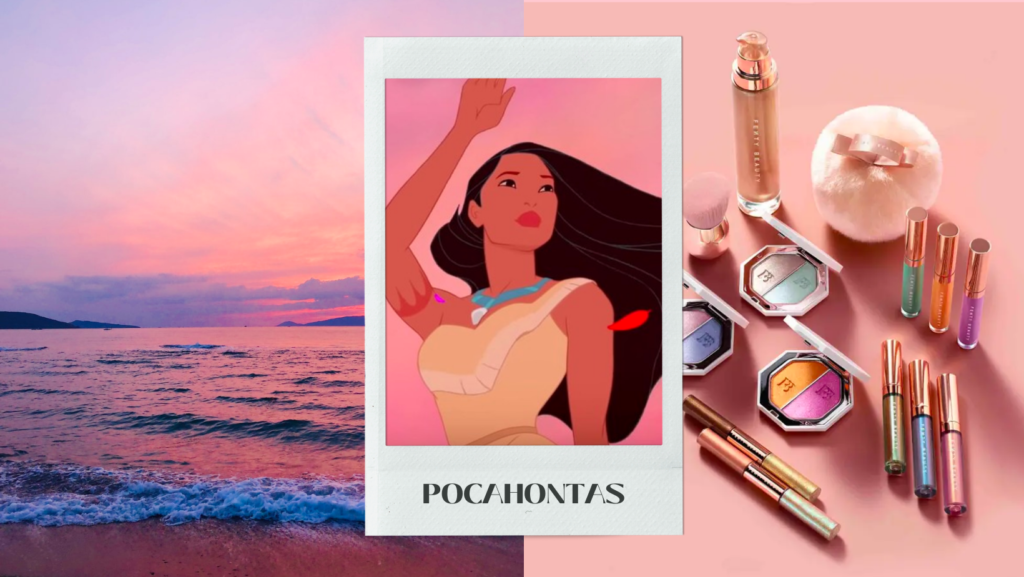“Pocahontas.” My uncle coined this nickname to me for my darker skin. It was in the 3rd grade when my mother asked our pediatrician to suggest whitening creams or lotions that could lighten the color of my skin. I loathed family gatherings as I knew complaints from my aunts would come about how tan my skin had darkened. I was an avid swimmer, proud of the tan lines and how athletic I felt being able to swim 100 meters free in the heat of the sun. I was the black sheep of the family. In photos, it was easy to point out my darker tanned skin against my relatives’ pale peaches and cream skin tone.
By the end of the summer, I amassed a collection of lotions and creams, with hopes of finally being accepted for lighter, brighter skin. I stopped swimming in the summer, partially because of school workload and because I was tired of seeing my skin tan, and I even began to compare my skin tone to other friends, resenting them even for how “beautiful” their light pale skin was. Photo editing tools such as changing the brightness, reducing saturation, and toning down warm tones in my skin were all commonplace habits to try and change the image my tan skin portrayed. Naturally, as I stopped going out in the sun and used the lotion and lightening creams, my skin began to pale slightly. To this day, some families will reminisce about my darker tan skin. Through other health issues as well, my skin became paler, and it looked sickly; it made me miss my healthier tan skin. I didn’t face the great extent of colorism that darker-skin Asians do in my community, but from my childhood experience, I can not imagine the colorism young Asian girls like myself have faced – just for being tan.
However, I wish I had loved my darker skin, my mark of being southeast Asian, and being basked in the sun while swimming. I wish I cherished my tanner skin, and I wish I could say I could only relate to this experience. However, this experience is shared by many young Asian girls like myself. The beauty industry has also pushed the standard of lighter skin, shown in cosmetics shade from the most expansive color range of “light fair to beige.” The average shade range in a beauty brand is around 10 (Chandler). Those with darker skin tones are left without shade ranges that complement their skin, and beauty campaigns are plastered with clear-skinned pale models.
The lightening skin beauty industry is worth 8 billion dollars, fueling many Asian beauty standards of paler “brighter” skin. In India, the beauty brand “Fair and Lovely” changed their name due to backlash to Glow and Lovely.” Their company uses a whitening cream with just another catch – the addition of steroids. The steroids in these brightening creams have been the cause of steroid addiction, red face syndrome, and even painful skin burning (Salman et. al). The creams even have heavy metals, and some are mercury-based, worsening skin conditions like acne and eczema.
Social media has also perpetrated colorism. TikTok has a filter to lighten skin and even a color selector where you can lighten your skin tone for filming a video. The name of this lightening filter on TikTok was “Fix You.” If that isn’t enough, social media has also glorified pale skin, with many influencers in the beauty community being of lighter skin and offering most brand deals. However, there is an effort to be more inclusive of other skin tones, with brands like Fenty Beauty expanding foundation shade ranges and promoting influencers of diverse backgrounds and skin tones. The Dark is Beautiful Campaign by Bollywood actress Nandita Das has also shown an initiative in the entertainment industry within Asia to move towards a more inclusive community.
Colorism is an issue that has stemmed from racism and discrimination. Young girls like myself should not have to be subject to discrimination or bullying for what their skin tone looks like. The beauty standard of pale skin breeds a social hierarchy of toxicity among young Asian women, and I hope that social media and beauty brands will continue making efforts towards inclusivity.
Works Cited
Salman, Samia, et al. “Address for Correspondence Facial Abuse of Topical Steroids and Fairness Creams: A Clinical Study of 200 Patients.” Journal of Pakistan Association of Dermatologists, vol. 24, no. 3, 2014, pp. 204–211, applications.emro.who.int/imemrf/J_Pak_Assoc_Dermatol/J_Pak_Assoc_Dermatol _2014_24_3_204_211.pdf.
Chandler, Carmen. “Study Finds Dark-Skinned Asian and Latino Teens Report More Discrimination.” CSUN Today, 15 Nov. 2018, csunshinetoday.csun.edu/media-releases/study-finds-dark-skinned-asian-and-latino -teens-report-more-discrimination/. Accessed 1 Mar. 2022.
